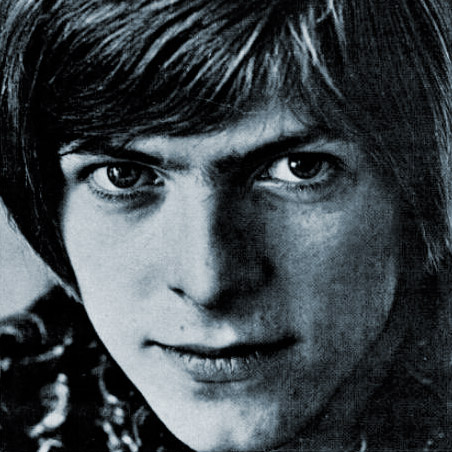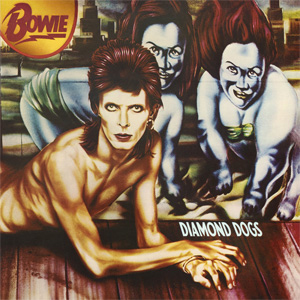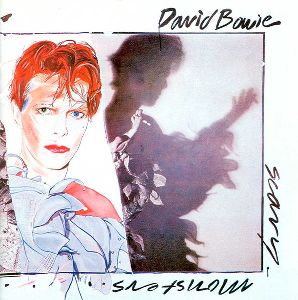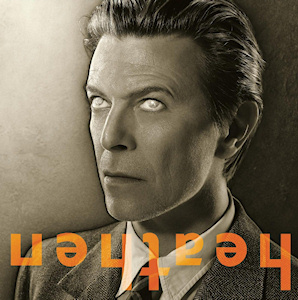Every one of David Bowie’s studio albums rated
David Bowie was one of the most important recording artists of the last 50 years. Here’s a guide to his discography
By Tim Gibson
It may be almost three years since he died, but David Bowie’s cultural importance continues unabated.
| As in life, so in death: Bowie remains the ultimate space-shifter, an enigma... |
If anything, the eerie circumstances of his departure, coinciding as it did with the release of his final single “Lazarus”, have served only to perpetuate the myth.
As in life, so in death: Bowie remains the ultimate space-shifter, an enigma who means different things to different audiences.
Nothing bears this out with more clarity than an examination of his studio albums. They show a man perpetually on the move, constantly pushing at boundaries and revealing new versions of himself to the world.
Here’s a guide to every one of those albums (excluding film sound tracks), along with a rating out of five.
 David Bowie (1967)
David Bowie (1967)
Younger fans are surprised by this album’s straightforward 1960s music-hall vibe. But that’s the tradition Bowie first sought to ape, and he did so with mixed effect. It feels anomalous against later work, but is an important part of the canon nonetheless. 2/5
David Bowie (1969, released as Space Oddity in 1972)
Although this album includes the famous song that gave the later release its name, it remains something of an, erm, oddity in Bowie’s oeuvre. The album feels more like a collection of novelty songs than the work of an artist who would go on to reshape pop music. 2/5
The Man Who Sold the World (1970)
Bowie started to hit his stride as a songwriter and performer with this album. It continues with the now-familiar themes of aliens and space culture, and includes some of the best rock riffs you’ll ever hear. 4/5
Hunky Dory (1971)
Some regard this album as a step backwards, adopting a more acoustic sound than its predecessor and focusing on very British themes. But for many it is Bowie’s finest ever work: stunning song craft and mesmerizingly good lyrics. 5/5
| ...it spawned one of the most memorable characters ever created in popular culture... |
The Rise and Fall of Ziggy Stardust and the Spiders from Mars (1972)
For many fans, this is where it all began. An amazing rock record in its own right, the fact it spawned one of the most memorable characters ever created in popular culture is a further reason for its enduring appeal. 4/5
Aladdin Sane (1973)
Bowie’s astonishing work rate continued with this refresh of the Ziggy Stardust theme. The outstanding “Drive-in Saturday” makes this a classic album all by itself. But with other tracks like “The Prettiest Star” and the titular track, this one’s a clear winner from an artist at the top of his game. 4/5
Pin Ups (1973)
Just six months after Aladdin Sane came this covers album. Not one just to recreate the work of his heroes, Bowie put his own spin on songs including “Here Comes the Night” and the brilliant “Sorrow”. 3/5
 Diamond Dogs (1974)
Diamond Dogs (1974)
Originally conceived as a 1984-themed concept album, Diamond Dogs explores darkly utopian themes in an appropriately sombre soundscape. For all that pretension, there are moments of straight-up rock and roll, including the catchy “Rock ‘n’ Roll with Me”. 3/5
Young Americans (1975)
Bookended by the title track and “Fame”, this short album has a more commercial vibe than Bowie’s earlier output. It can feel like a bit of a gear-change from his previous run of albums. 3/5
Station to Station (1976)
Another short burst of more mainstream-sounding pop and rock music. Spawned hits such as “TVC15” and “Golden Years” but not often regarded as a classic by Bowie fans. 2/5
| You either get what he was doing with these albums or you don’t. |
Low (1977)
The first of Bowie’s Berlin trilogy. You either get what he was doing with these albums or you don’t. If you’re in the former category, this is probably the best album Bowie ever made. 5/5
“Heroes” (1977)
A harder listen than its predecessor, “Heroes” inspired a whole generation of electronica. It really was an epoch-making album. The title track is a classic, but a close listen gives rise to a slight suspicion that Bowie was making it all up as he went along. 4/5
Lodger (1979)
The least known of the Berlin albums, Lodger repays a closer listen. There are some great pop hooks throughout the tracks and a sense that Bowie was already moving towards the more mainstream sound that defined his subsequent releases. 3/5
 Scary Monsters (And Super Creeps) (1980)
Scary Monsters (And Super Creeps) (1980)
This was rather a hotchpotch offering. It spawned the hugely successful “Ashes to Ashes” single, with its knowing reference to Major Tom. “Up the Hill Backwards” is often held up as a quintessential Bowie track, but overall the album doesn’t hit the heights of the Berlin sessions. 3/5
Let’s Dance (1983)
Bowie purists often cite this album as the start of a period in which he sold out to the world of commercial pop music. It was a huge seller, though, and there’s no denying the quality song writing on tracks like “Modern Love”, “China Girl” and “Let’s Dance”. 4/5
Tonight (1984)
Okay, so it’s another commercially oriented collection of songs. But who can argue with music like “Blue Jean”, “Loving the Alien” and “Don’t Look down”? 3/5
Never Let Me Down (1987)
Rarely held up by fans as an example of Bowie at his best, this was a huge commercial hit. Yet look at the track listing and you’ll struggle to spot any bona fide classics. Unusually for a Bowie album, Never Let Me Down feels very much of its time. 2/5
| Many critics see this as the beginning of Bowie’s creative renaissance after the ill-fated Tin Machine years. |
Black Tie White Noise (1993)
Many critics see this as the beginning of Bowie’s creative renaissance after the ill-fated Tin Machine years. The texture on display in this album is sublime, and Bowie’s voice is better than it’s ever been. 4/5
1. Outside (1995)
Reunited with Brian Eno, Bowie continues to rediscover his mojo as a songwriter and performer. The Pet Shop Boys remix of “Hallo Spaceboy” ensured the album had a standout hit. 3/5
Earthling (1997)
Drawing on drum and bass rhythms and contemporary electronica, Bowie continued to experiment with new music styles. This album helped him resist the charge of irrelevance, but isn’t always an easy listen. 3/5
‘hours…’ (1999)
The notable thing about ‘hours…’ is that Bowie released it digitally, via the internet. None of us thought that whacky idea would catch on… (the music’s great, by the way, if a little flat in places). 4/5
 Heathen (2002)
Heathen (2002)
Widely regarded as the beginning of Bowie’s brilliant return to form in his later years, Heathen is an album with many highlights. “Everyone says ‘Hi’” is up there with classics like "Kooks" and "Life on Mars". 4/5
Reality (2003)
Building on his creative resurgence, Bowie released Reality soon after Heathen and it was every bit as good. The song craft is great, with multi-layered production taking the Bowie sound in a subtly new direction. 4/5
The Next Day (2013)
After a decade of silence, Bowie released The Next Day quietly over the internet in 2013. It was immediately greeted as the spiritual successor to his Berlin trilogy (a view perpetuated by his use of the “Heroes” artwork on the cover). It is an excellent album – better in many ways than the now-legendary one that came after it. 4/5
Blackstar (2016)
For many, Bowie’s untimely death imbues this album with a deeper meaning than his other output. Put that to one side and listen closely, however, and you may find yourself wondering if it really deserves the hype. 3/5
Published: 3 October 2019
© 2019 Just Recruitment Group Ltd
If you enjoyed this article, you may like: The best 10 albums from the 1970s (in my opinion)
You may also enjoy: From the horse’s mouth: six books about political leaders from 1997 – 2019

